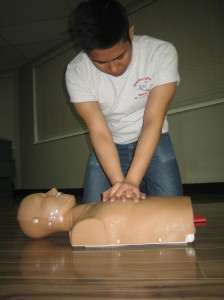
If you were in the presence of an individual getting a cardiac arrest, would you know what to do? Well, apart from reaching out to the phone to call for medical emergency? Would you know the basic life support skills to help increase the chances of survival? If you do not have an idea of what you would do, then this article is intended for you. Hands-only CPR is a technique that many, if not all of us should be aware of. Part of the reason for this is that a cardiac arrest has no ‘warning’, so it is always important to be prepared before-hand. Interestingly, knowing and understanding these techniques is very easy and accessible. The latter is made possible because there are several training centres available today that teaches the latest CPR rescue techniques. Learn the latest CPR rescue skills today by taking a course with one of our training providers in either Canada or the United States. Hands-on training is better than any on-line course.
Owing to the numerous advantages of hands-only CPR, this has become the recommended method of providing CPR. Just as the name suggests, this technique eliminates the need for mouth-to-mouth procedures in traditional CPR techniques. Instead, this form of CPR trains individuals to pump the victim’s chest. Some have alluded to the fact that this could be as easy as providing chest compressions in line with the beats of the all-time favorite song ‘Staying alive’ by the Bee Gee’s.
This may seem laughable, but when you consider that only about 40% of all cardiac arrest victims get CPR, then these grim statistics put a lot in perspective. The reason for this is that many individuals feel helpless in the presence of a cardiac arrest victim and all because they are not quite sure how to carry out CPR. In some cases, individuals are afraid of giving mouth-to-mouth CPR, either because they are not well trained, or are skeptical about the procedure. This is where hands-only CPR comes in handy (no puns intended!)
Back in 2008, one Alson Inaba chose to take a step to change all this. He simply taught his students a creative yet effective way to make them recall the 100 chest compressions for every 60 seconds in CPR. By doing this in tune with the beats of ‘Staying Alive’, they would effectively manage the chest compressions required for hands-only CPR. This technique caught on, and it is at this point that different health associations sought to make campaigns for individuals to learn this simple yet life-saving CPR technique. What then does this CPR technique involve? What makes it distinctly different from conventional CPR, yet effective?
The first step of hands-only CPR is to call for medical emergency help. The next step is to offer chest compressions by placing one’s hands at the centre of the chest and giving 100 compressions per minute until medical help arrives. This, in tune with the beats of ‘Staying Alive’ and you give the victim a chance to live. Of course there are conditions where this form of CPR is preferred as is the case with small children and individuals who have collapsed suddenly. With these chest compressions, it is possible for blood to be pumped to vital organs within the body, therefore increasing the patient’s chances of survival.
